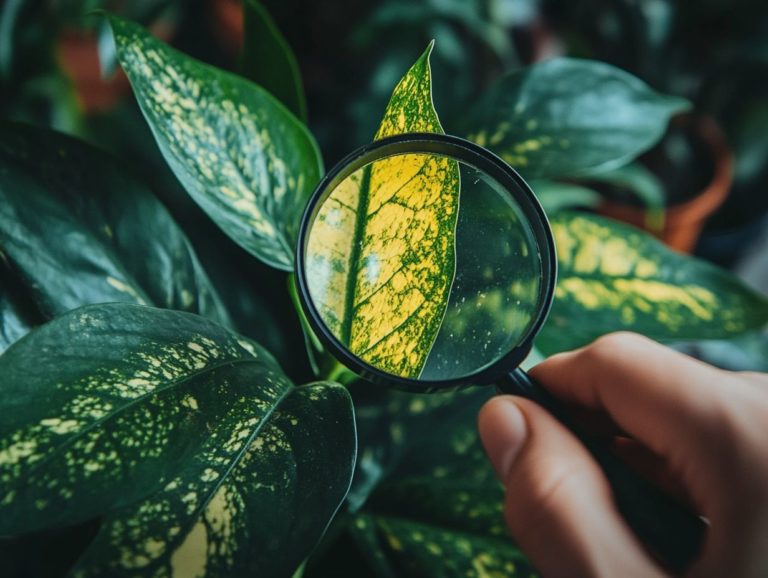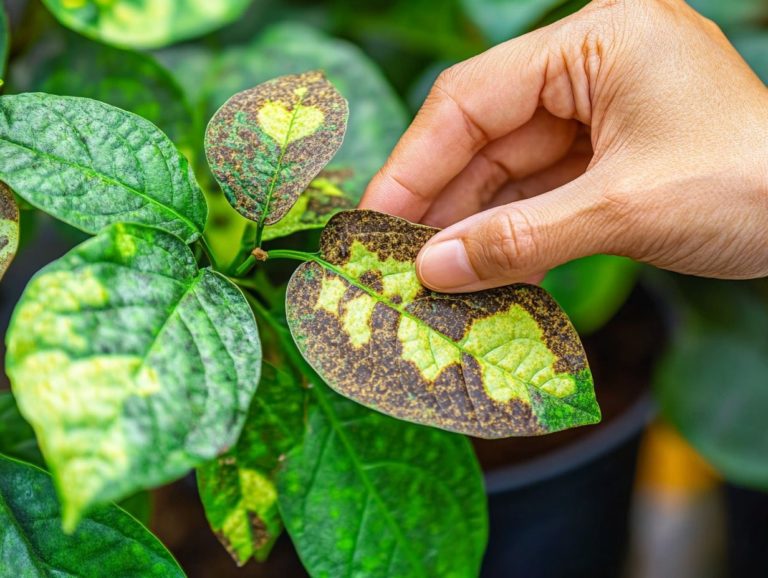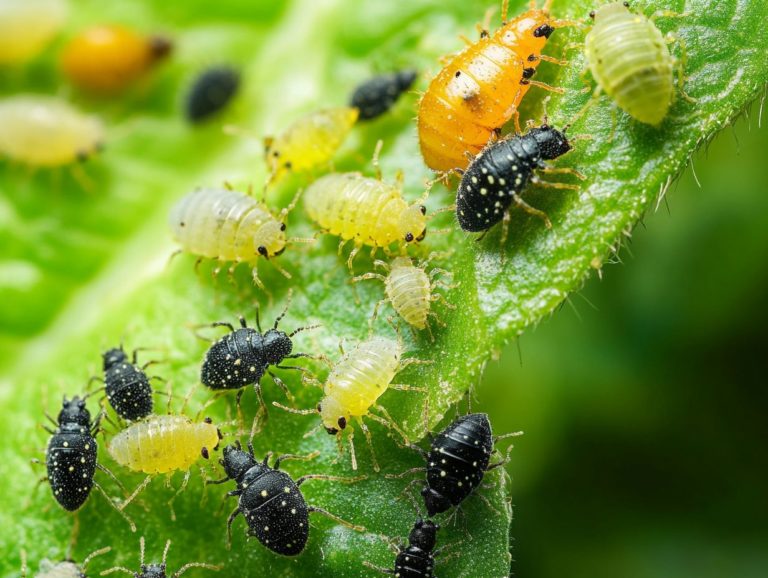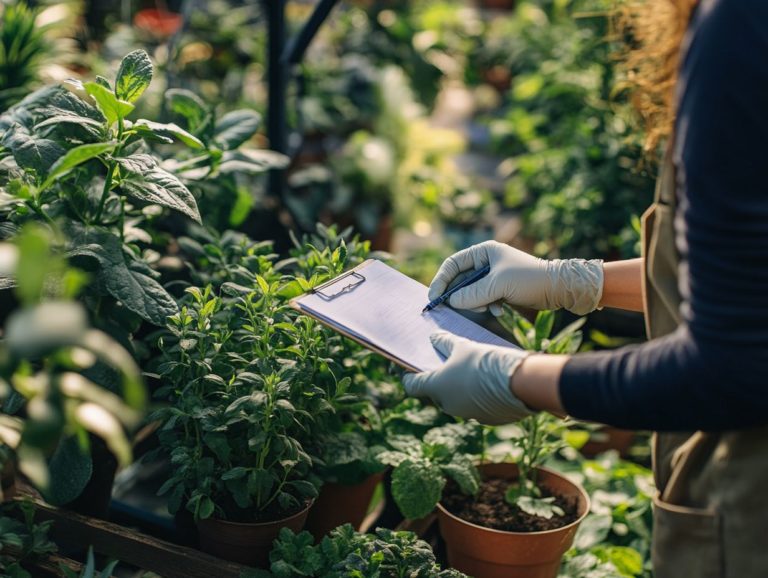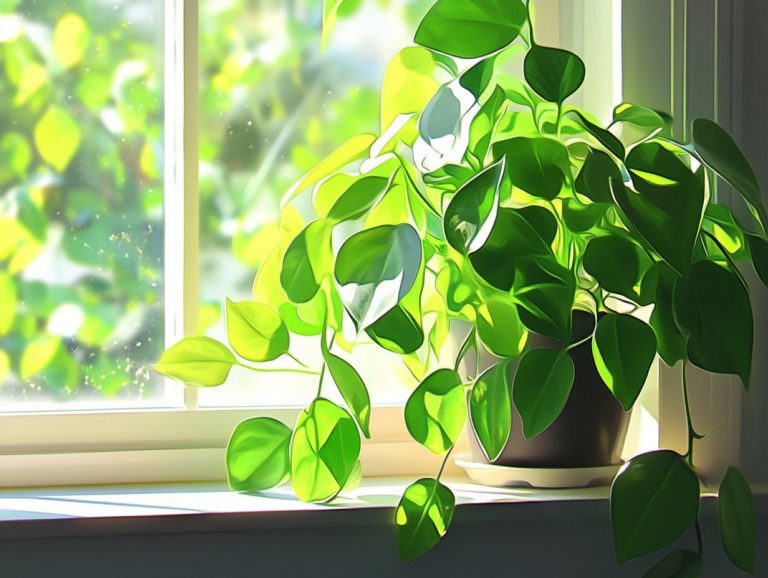Understanding Fungus Gnats in Houseplants
Fungus gnats can sneak up on houseplant enthusiasts, often remaining unnoticed until their population explodes. These small, dark insects not only mar the aesthetic of your indoor garden but can also pose a threat to the health of your beloved plants.
This article will guide you in identifying these tiny intruders, exploring the environmental conditions that favor their infestations, and uncovering effective prevention and treatment strategies. It will also highlight other common houseplant pests that may require your attention. Get ready to take back your green oasis and enjoy healthy plants once again!
Contents
Key Takeaways:
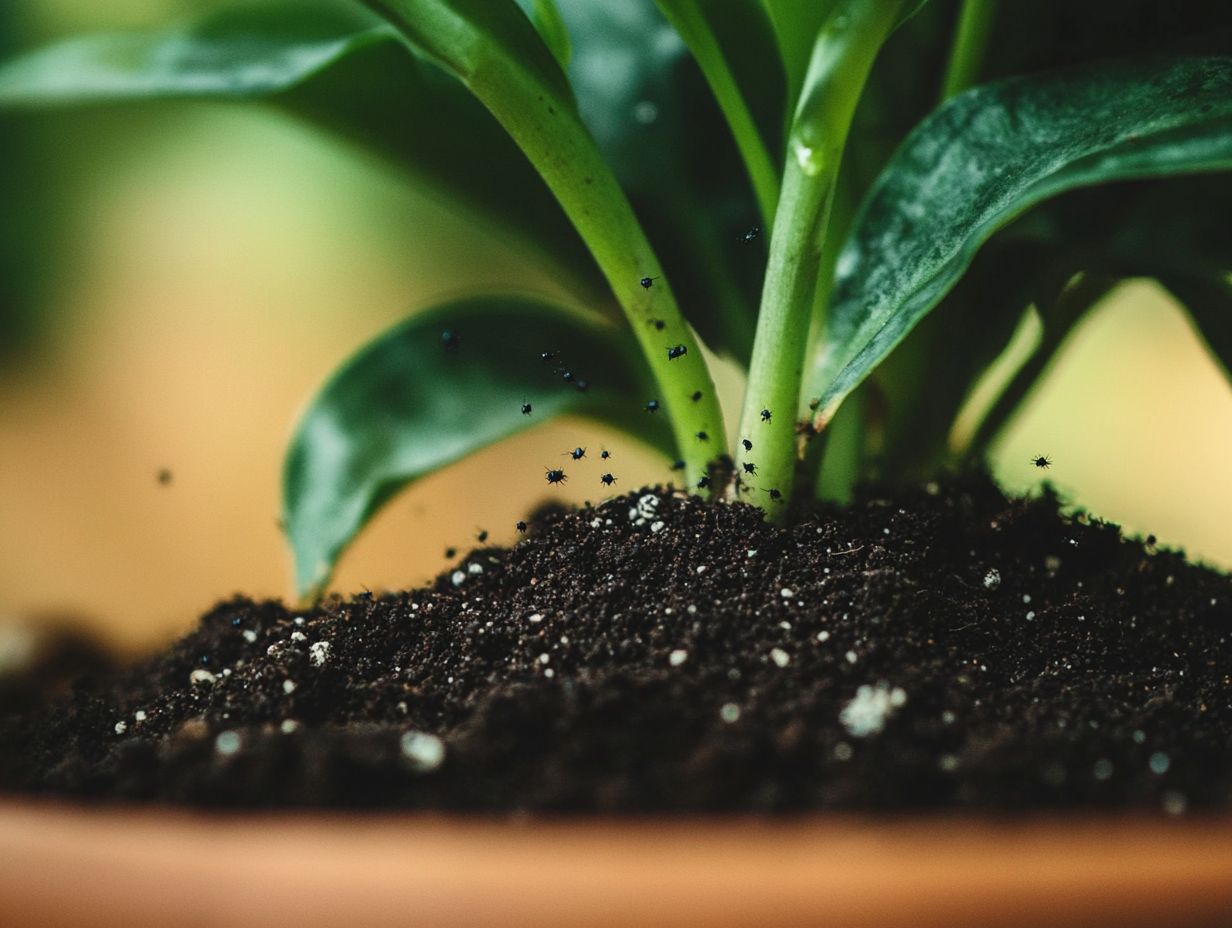
- Fungus gnats are small, flying insects found in houseplants.
- They thrive in damp soil due to overwatering and decaying organic matter.
- Prevent and treat them by ensuring proper care and using methods like sticky traps.
What are Fungus Gnats?
Fungus gnats are those tiny, dark flies that you might spot buzzing around your houseplants. They often emerge from the damp soil where they breed.
These little nuisances typically measure about an eighth of an inch long and thrive in humid environments, especially where the soil stays consistently moist. This creates the perfect breeding ground for them.
Adult gnats lay eggs in the top layer of the soil, starting their life cycle. Once hatched, the larvae feed on organic matter and plant roots, which can spell trouble for your beloved plants think stunted growth and a higher risk of root rot and other diseases.
To minimize potential damage, it s essential to tackle infestations swiftly. By implementing effective prevention methods, you can limit their reproduction and safeguard the health of both your indoor and outdoor plants.
Identifying Fungus Gnats in Houseplants
Identifying fungus gnats in your houseplants is essential for effective pest control, as these pesky invaders often remain unnoticed until they escalate into a full-blown infestation. Their presence can compromise the health of your plants and significantly impede their growth if not addressed swiftly.
Look out for the telltale signs of a gnat infestation: adult gnats fluttering around your plants and larvae lurking in the soil, especially in damp or decaying organic matter. Taking action at the first sign can save your greenery from unnecessary distress. Don t wait! Act at the first sign of these pests to protect your plants.
Physical Characteristics and Behavior
Fungus gnats, easily recognized by their diminutive size and dark hue, possess unique physical traits and behaviors that set them apart from other household nuisances. The adults measure about 1/8 inch long and sport long legs and wings.
The larvae are slender and white, often lurking in the plant soil and feasting on organic matter. To effectively prevent and control these pests, it’s essential to grasp their behaviors, particularly their fondness for moisture and decaying plant material.
These minuscule insects flourish in damp, organic-rich environments, making houseplants an attractive sanctuary. Adults tend to be most active in the evening, fluttering about in search of a suitable spot, while larvae prefer to dwell in the top few inches of soil, where they munch on fungi, algae, and roots.
Their lifecycle is characterized by rapid reproduction; a single female can lay hundreds of eggs in moist soil, allowing their populations to expand rapidly. Given their potential to inflict root damage, it’s vital for plant owners like you to keep a close eye on soil moisture levels and adopt effective pest management strategies.
Causes of Fungus Gnat Infestations
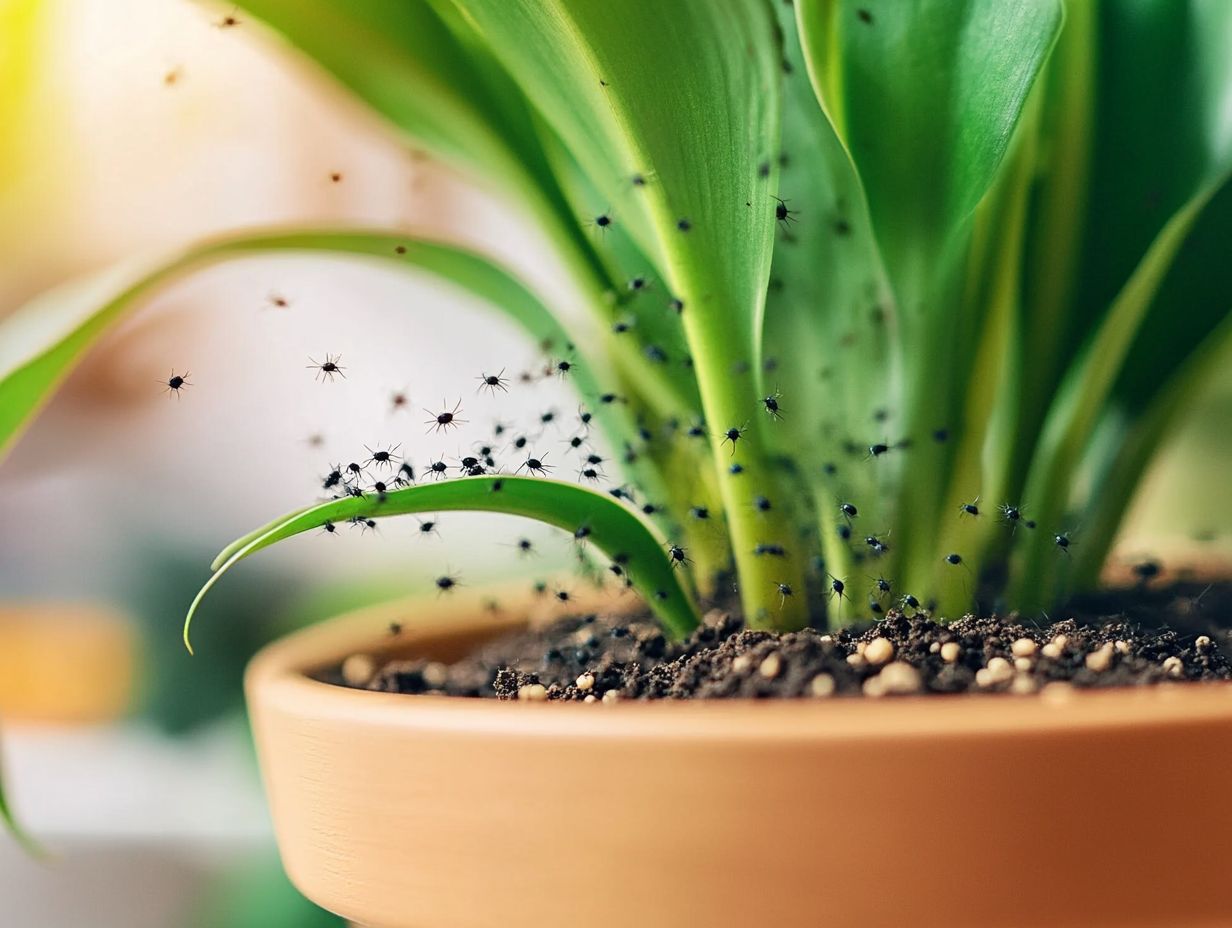
Fungus gnat infestations often stem from particular environmental conditions that create a perfect haven for their growth and reproduction, especially within houseplants. These pests tend to flourish in damp soil that boasts a rich organic composition, typically resulting from overwatering or the accumulation of decaying plant matter.
Recognizing these underlying causes is crucial for any gardener aiming to thwart infestations before they take hold.
Environmental Conditions and Plant Care
Your houseplants thrive best when their environmental conditions are right. Pay particular attention to the moisture levels in the soil.
Overly damp soil, often due to improper watering techniques, invites fungus gnats. Master the art of optimal plant care and the right watering methods to reduce this risk significantly.
Ensure your soil drains well and stays aerated. Regular soil checks boost plant health and keep pesky insects at bay.
Monitor humidity and temperature closely. These factors greatly affect your plants and the lifecycle of gnats.
With a balanced watering schedule, you can create a less inviting environment for gnats, promoting healthy, infestation-free plants.
Preventing and Treating Fungus Gnats
To keep fungus gnats away, use a mix of preventive steps and effective treatment strategies. This will keep your houseplants healthy.
Use sticky traps to catch adult gnats and mosquito dunks to target larvae in the soil. Maintaining a proper watering schedule significantly lowers the chances of an outbreak.
Explore organic solutions like neem oil and hydrogen peroxide for additional pest control options.
Effective Methods for Control and Prevention
Control fungus gnats by disrupting their lifecycle. Sticky traps capture adults, while mosquito dunks target larvae lurking in the soil. Don t overlook the power of neem oil for organic pest control.
To maximize effectiveness, place sticky traps near infested plants. Remember, mosquito dunks may need reapplication, especially in moist potting soil.
Keep moisture levels consistent; overwatering creates a breeding ground for these pests. Consider adding beneficial nematodes to your strategy; they target larvae safely.
By practicing these prevention strategies, you ll tackle existing infestations and prevent future outbreaks, ensuring a healthier growing environment.
Other Common Houseplant Pests
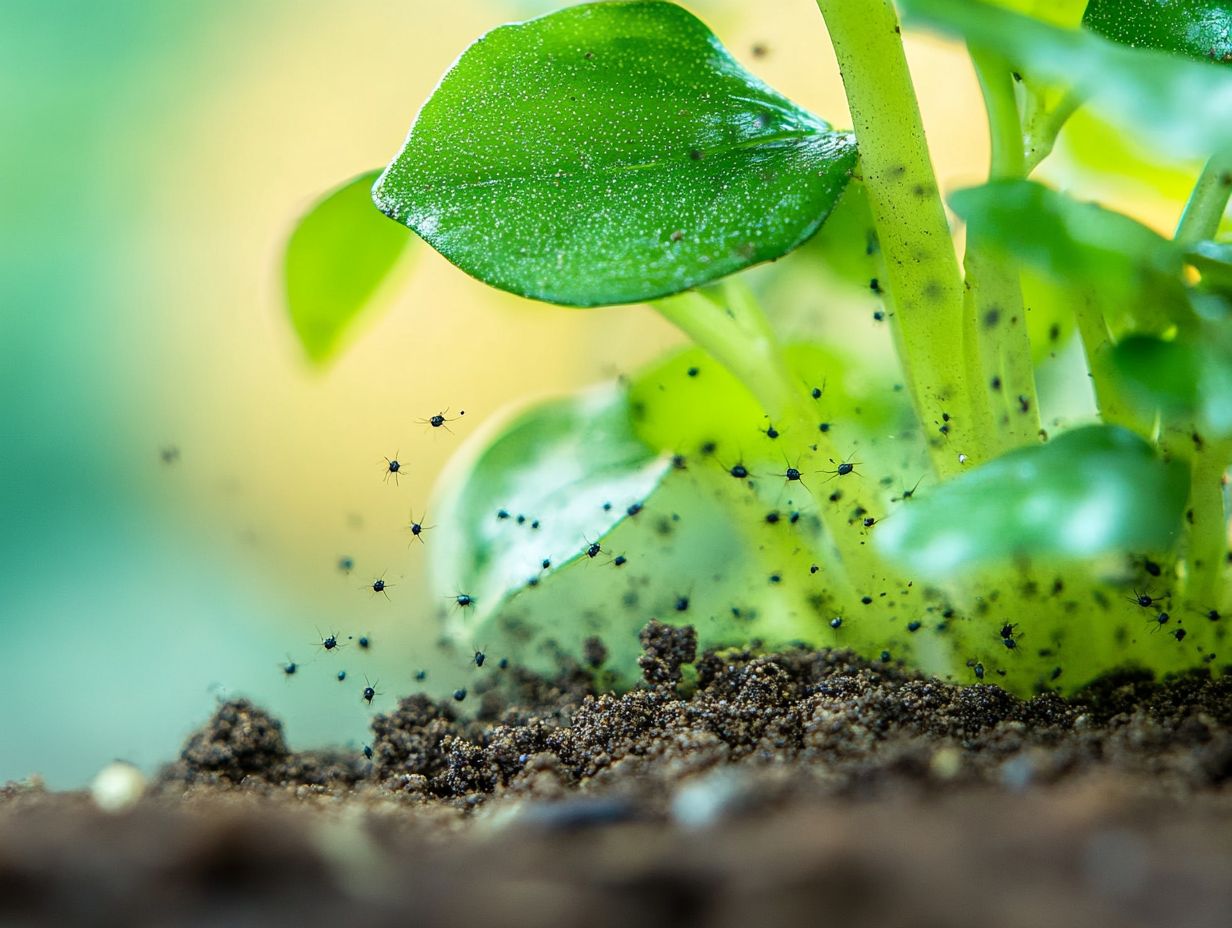
Your houseplants can face threats from various pests. Early identification is key for effective treatment and their overall well-being.
Watch for aphids, spider mites, and mealybugs. Each requires specific identification and treatment. Proactive measures will protect your plants and help them thrive.
Identification and Treatment of Common Pests
Identifying and addressing common pests in your houseplants is vital for maintaining their health and vigor. Each pest requires a tailored approach for effective management. Look for visual signs like leaf discoloration or webbing; these could signal specific pests, such as spider mites or aphids. Prompting the need for swift action is crucial to protect your plants from pests.
Your treatment arsenal might include options like insecticidal soaps, neem oil, and even beneficial insects, which are insects that help control pest populations naturally.
Regularly monitoring your plants can help you catch early signs of infestation. For instance, mealybugs often leave behind a sticky residue and cottony clusters, while scale manifests as small, raised bumps on the stems.
Understanding the lifecycle of these pests is crucial; some reproduce rapidly, leading to significant damage if not addressed in time. In severe cases, you may need to remove an infested part of the plant entirely.
Using a strategy that combines different methods to control pests can improve your plant care routine. This approach blends organic treatments with consistent monitoring to ensure optimal health. By enabling yourself with knowledge about these pests and their control methods, you can cultivate a vibrant and thriving indoor garden.
Frequently Asked Questions
What are fungus gnats?
Fungus gnats are small, flying insects commonly found in houseplants. They are characterized by their long legs and dark bodies.
How do fungus gnats affect houseplants?
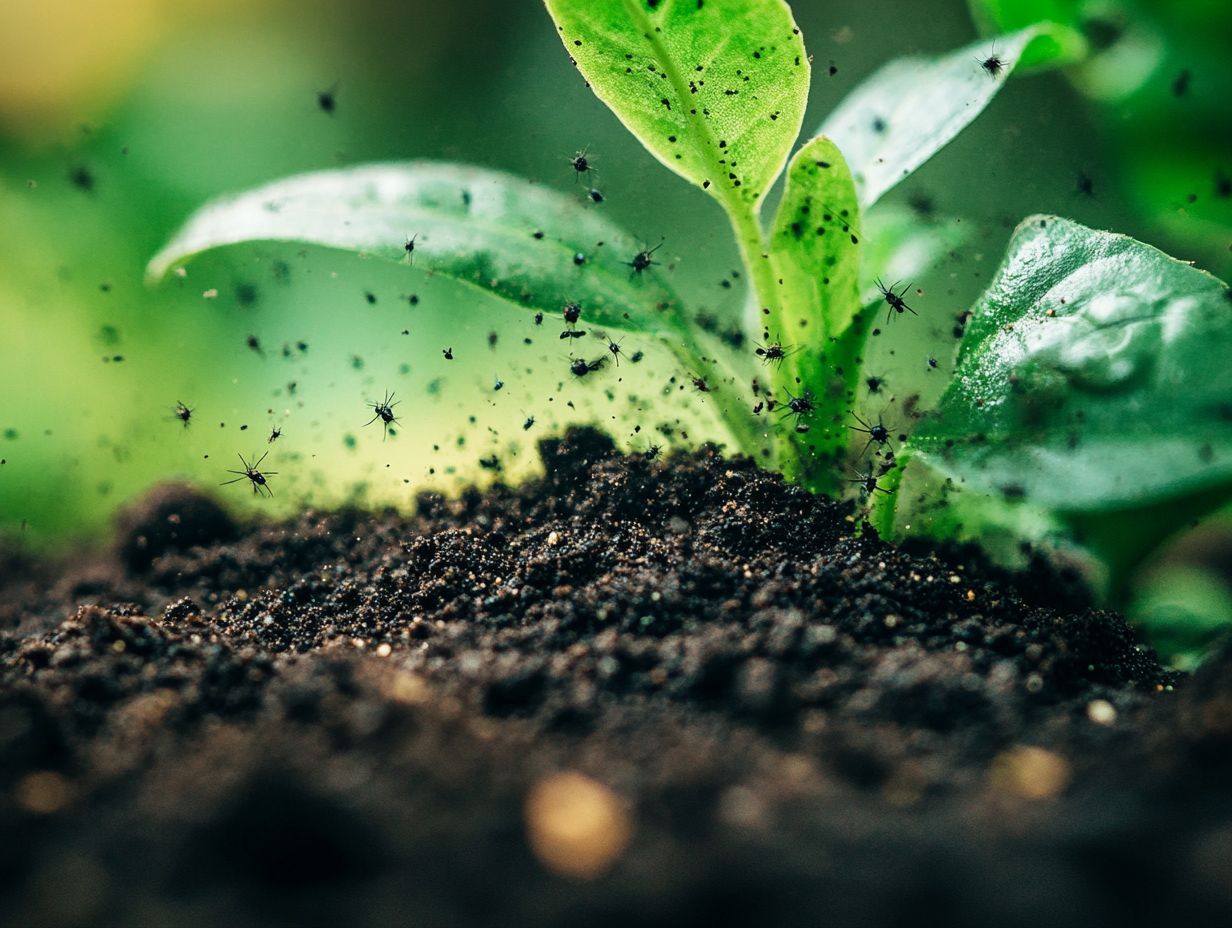
Fungus gnats do not directly harm houseplants but can become a nuisance and affect the plant’s growth by feeding on fungi and organic matter in the plant soil. They can also lay their eggs in the soil, which can hatch into larvae that may damage the roots of the plant.
How do I know if my houseplants have gnat infestations?
Fungus gnats are typically seen flying around houseplants or resting on the damp soil. You may also notice small, black adult gnats crawling on the soil or flying around the plant.
How do I get rid of fungus gnats in my houseplants?
There are a few methods to get rid of fungus gnats in houseplants. Some options include using sticky traps, mosquito dunks, allowing the soil to dry out between waterings, and using a diluted hydrogen peroxide solution to kill larvae. It’s also important to check for any sources of excess moisture or decaying plant matter in the plant’s soil.
Can fungus gnats cause damage to other plants in my home?
Fungus gnats are typically only a problem for houseplants and do not cause damage to other plants in the home. However, if the gnat infestation becomes severe, they may start to feed on the roots of other plants as well.
Are there any natural ways to prevent fungus gnats in my houseplants?
There are a few natural methods for pest control to prevent fungus gnats in houseplants. These include using a layer of sand on top of the soil, which can prevent the gnats from laying their eggs, and using beneficial nematodes that feed on gnat larvae. Applying neem oil can also help deter pests. Keeping the soil dry and not overwatering, along with repotting new plants, can help prevent an infestation.
Ready to take care of your plants? Start your pest management today!

